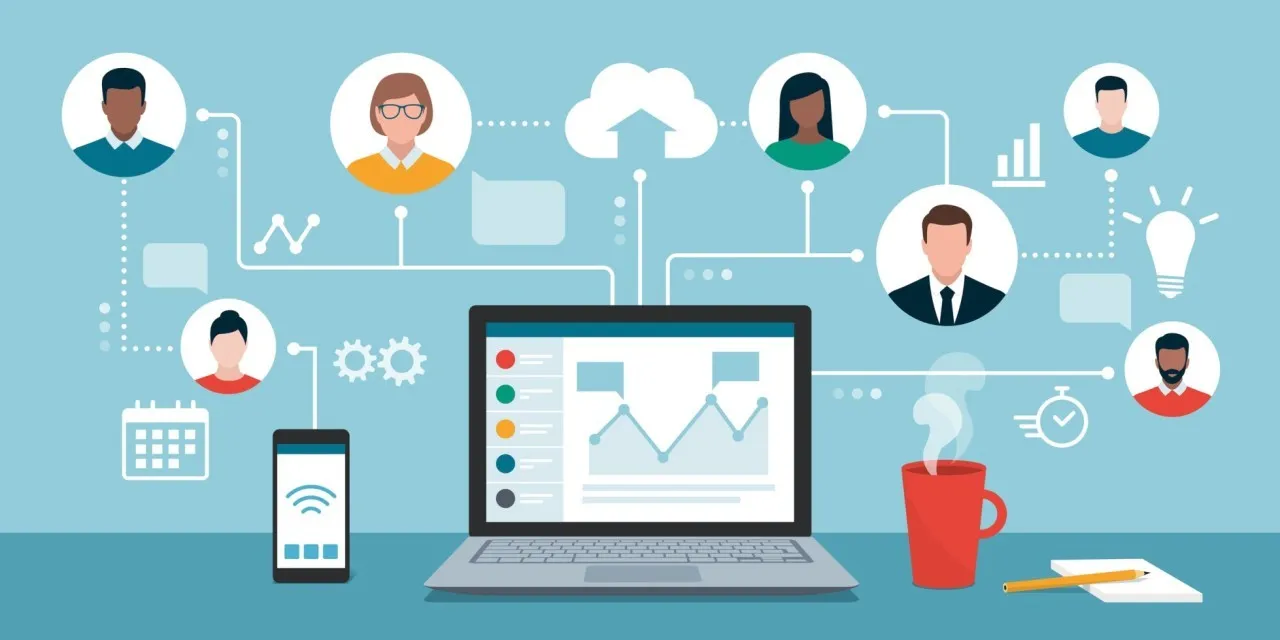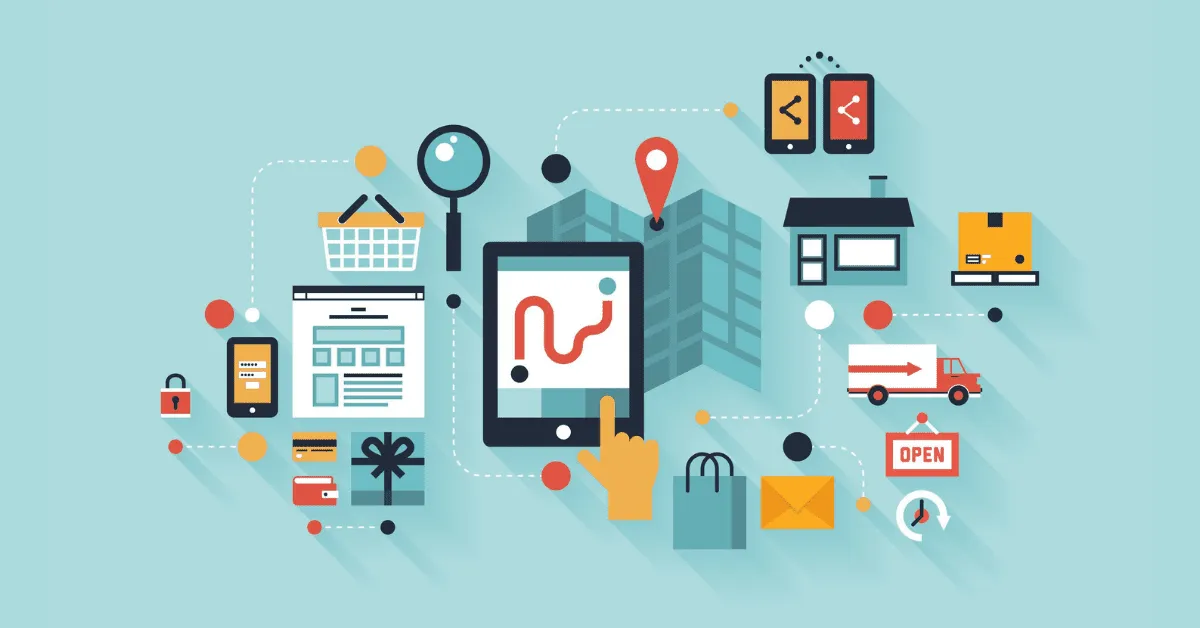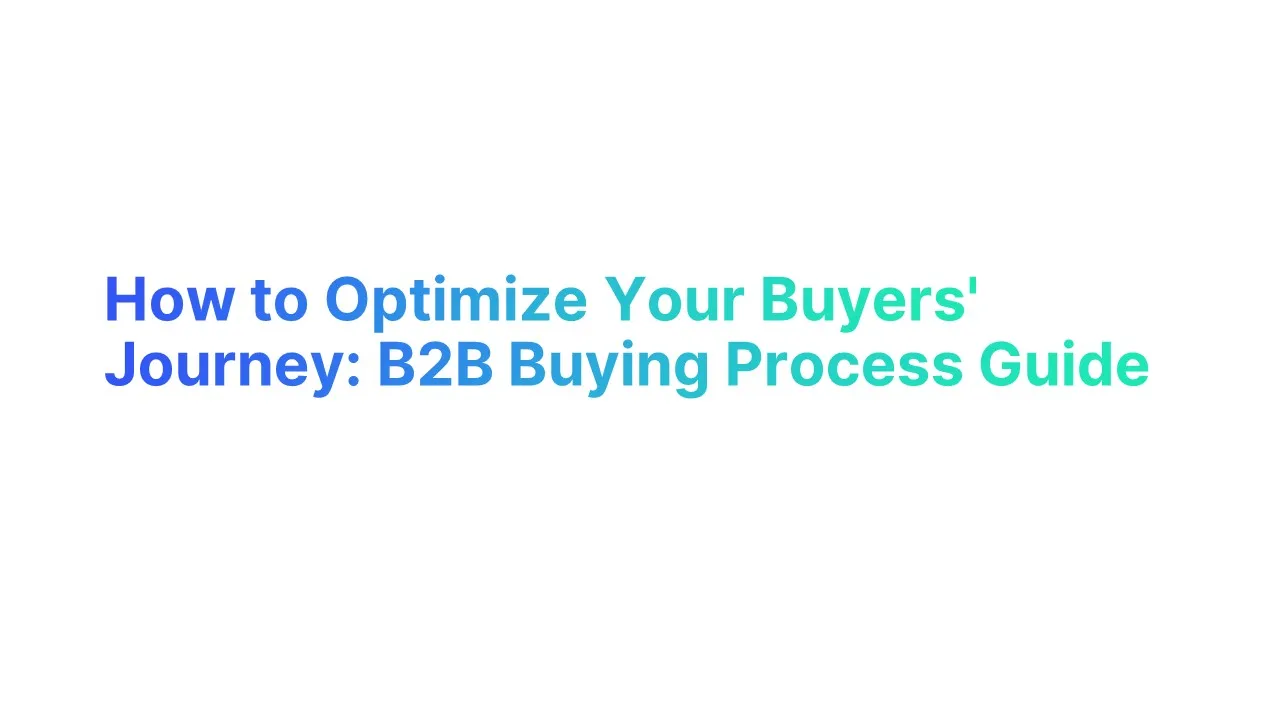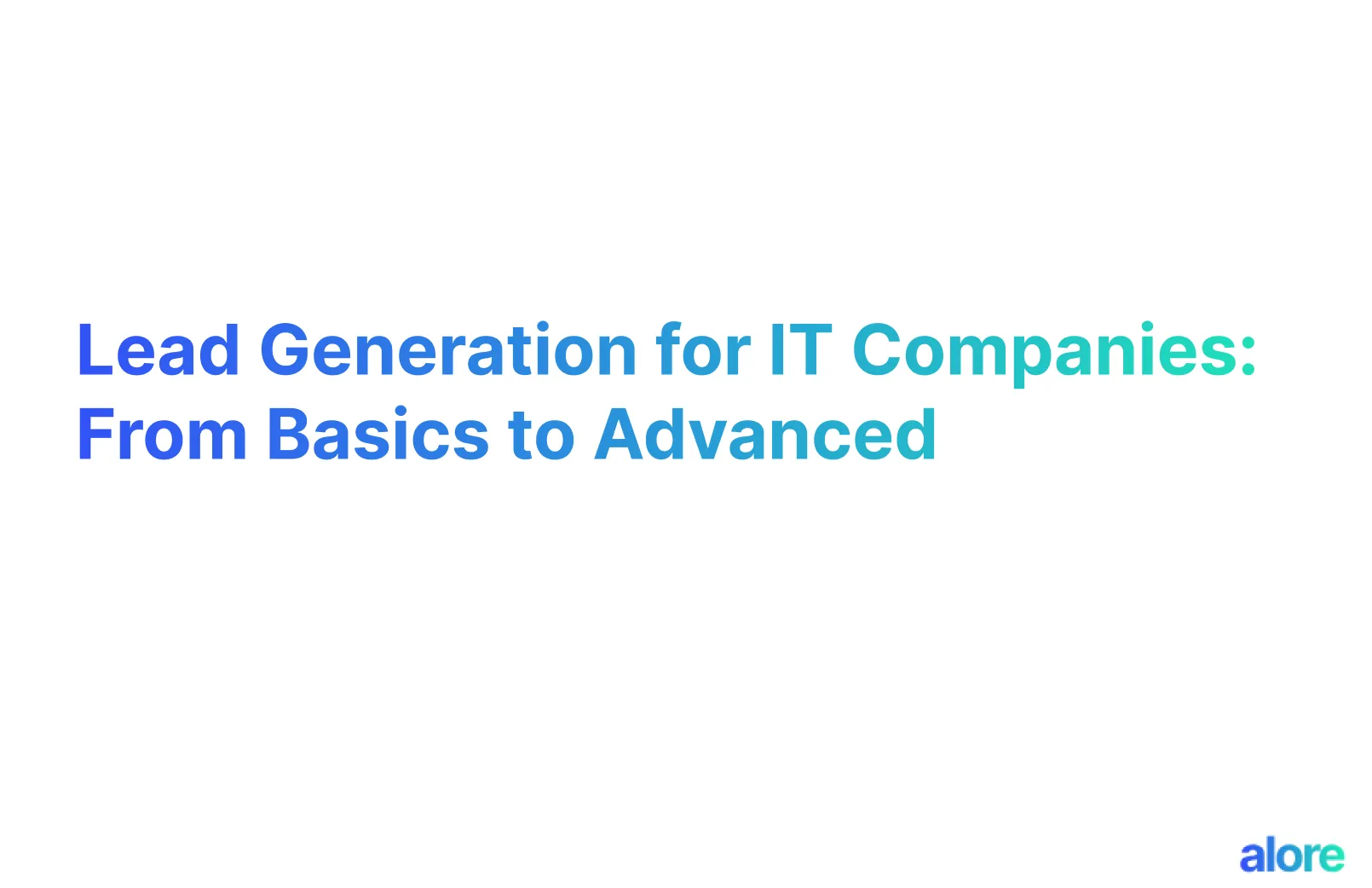Introduction to the B2B Buyer's Journey

What is the Buyer Journey in B2B
The B2B buyer journey encompasses the entire process a buyer undergoes, from becoming aware of your brand to assessing your products and services, and ultimately deciding to purchase.
This journey not only serves as the initial point of engagement for prospective customers but also presents significant opportunities for organic growth with current customers through cross-selling and up-selling strategies.
Comprising various elements, such as delivery and customer service, the focus of the B2B buyer journey is on identifying and capturing the interest of potential buyers, guiding them towards completing their purchase with your business.
Stages of Buyer's Journey in B2b

The B2B buyer's journey typically consists of the following stages:
1. Awareness Stage
At the start of the journey, potential customers become aware of a need or problem but might not be able to define it clearly.
- Identify the Problem: Businesses recognize a gap or issue that impedes their operations or growth.
- Information Search: They begin searching for information through digital channels, highlighting the importance of a robust online presence for suppliers.
The awareness stage is crucial for establishing initial contact. A strong content strategy that educates and informs can position your brand as a thought leader, increasing the likelihood of businesses turning to you as they move to the next stage. Streamlining expense approvals and procurement processes is simpler with dedicated spend management software.
2. Consideration Stage
Having defined their problem, buyers start considering various solutions and vendors.
- Comparison and Evaluation: Businesses evaluate different products, services, and suppliers, often through comparisons and in-depth analysis of available options.
- Content Consumption: They consume content like case studies, whitepapers, and customer testimonials to understand the potential value providers can offer.
Tailor your content to address common questions and showcase your unique value proposition. Use data and concrete examples to demonstrate your success, such as "Businesses using our solution see a 20% increase in efficiency within the first three months."
3. Decision Stage
In this final stage, the buyer selects a vendor and makes the purchase decision.
- Final Evaluation: Decision-makers review their options one last time, considering factors like price, ROI, and customer service.
- Purchase: A decision is made, and the purchase process begins, involving negotiations, quotes, and the final agreement.
This stage is your opportunity to differentiate and cement your relationship with the buyer. Personalized communication and demonstrating understanding of their specific needs can be pivotal.
4. Post-Purchase Evaluation
Though often overlooked, the post-purchase stage is significant in the B2B context.
- Implementation and Feedback: The buyer assesses the effectiveness of the solution and the overall buying experience.
- Loyalty and Advocacy: Satisfied customers may become loyal clients and advocates for your brand, influencing future purchasing decisions and referrals.
Follow-up support and check-ins can enhance customer satisfaction. For example, businesses that offer comprehensive post-sale support report higher customer retention rates, with a 25% increase in repeat business from satisfied clients.
How to Map Your Buyer's Buying Journey

Building a buyer journey map is a process that enables businesses to visualize the path their customers take from the first interaction with their brand to the final purchase and beyond.
This visualization helps companies understand and anticipate customer needs, preferences, and potential pain points at each stage of the journey, allowing for the creation of more targeted and effective marketing and sales strategies.
Here are the steps to build a comprehensive buyer journey map:
1. Define Your Buyer Personas
Research Your Audience: Compile data from customer surveys, interviews, sales data, and social media analytics to understand who your customers are.
Segment Your Audience: Identify different customer segments based on their characteristics, needs, and behaviors. Create detailed buyer personas for each segment, including demographic information, goals, challenges, and motivations.
2. Identify the Stages of the Journey
Outline Key Phases: Commonly, the buyer journey is divided into Awareness, Consideration, Decision, and Loyalty stages. However, your map should reflect the unique steps your customers take, which might include post-purchase evaluation or advocacy.
Customize to Fit Your Business: Adjust the stages to align with your specific industry, product, or service. This customization ensures the journey map is relevant and actionable for your business.
3. Determine Key Touchpoints
Catalog Interactions: Identify all the points where customers interact with your brand, including digital (websites, social media, email) and physical (store visits, events) touchpoints.
Assess Importance: Evaluate which touchpoints are most influential in moving the customer through the buying process and focus on optimizing these interactions.
4. Map Customer Actions, Motivations, and Emotions
Detail Customer Actions: For each stage of the journey, list out what actions the customer is taking, such as searching for information online or comparing different products.
Understand Motivations: Dive into the reasons behind these actions. What are customers trying to achieve at each stage?
Identify Emotions: Acknowledge the emotions and feelings customers might be experiencing at each touchpoint. This insight can guide how you engage with them to enhance their experience.
5. Identify Pain Points and Opportunities
Highlight Challenges: Note any difficulties or obstacles customers face along their journey. These could be related to finding information, understanding product benefits, or navigating the purchase process.
Spot Opportunities: Look for chances to improve the customer experience, whether by alleviating pain points, providing additional value, or streamlining processes.
6. Design Targeted Interventions
Create Content and Resources: Develop targeted content and resources that address the needs and questions of customers at each stage. This could include educational blog posts, comparison guides, or customer testimonials.
Implement Support Mechanisms: Ensure there are support mechanisms in place, such as live chat, FAQs, or customer service hotlines, to assist customers as they navigate their journey.
7. Test and Refine Your Map
Gather Feedback: Use customer feedback, surveys, and usability testing to assess the accuracy of your journey map and the effectiveness of your interventions.
Make Iterative Improvements: Continuously refine your map based on new insights, changes in customer behavior, or evolving business goals. The buyer journey is dynamic, and your map should be too.
8. Implement Across Your Organization
Share Insights: Ensure that teams across your organization, from marketing and sales to product development and customer service, understand and can apply the insights from the buyer journey map.
Align Strategies: Use the journey map to align strategies and initiatives across departments, ensuring a cohesive and customer-focused approach to business operations.
Example of Buyer's Journey Mapping
Creating a buyer's journey map involves visualizing the path your customers take from realizing they have a need that your product or service can fulfill, to the post-purchase experience.
Here’s an example of a buyer's journey map for a B2B software company offering project management solutions:
1. Buyer Persona: Marketing Manager Mike
- Demographics: 35 years old, works in a mid-sized marketing agency
- Challenges: Struggling with coordinating team tasks and meeting project deadlines
- Goals: Improve team efficiency and project delivery times
2. Awareness Stage
- Touchpoints: Google search for "how to improve team project management", social media ads on LinkedIn, blog posts about project management challenges
- Actions: Mike realizes the inefficiencies in his team's project management process and starts looking for solutions.
- Emotions: Frustration with current processes, optimism about finding a solution
3. Consideration Stage
- Touchpoints: Visits to product comparison websites, reading customer testimonials, watching demo videos on the software company’s website
- Actions: Mike evaluates different project management tools, comparing features, pricing, and customer reviews.
- Emotions: Overwhelmed by options but relieved to find structured comparisons and detailed product information
4. Decision Stage
- Touchpoints: Sales consultation call, free trial signup, email follow-ups with additional product information
- Actions: After a productive consultation and a positive trial experience, Mike decides to purchase the project management software for his team.
- Emotions: Confidence in the decision, anticipation of improved team coordination and project outcomes
5. Post-Purchase Stage
- Touchpoints: Onboarding emails, training webinars, customer support calls, user community forums
- Actions: Mike and his team undergo training, begin using the software, and reach out to support for initial queries.
- Emotions: Initial apprehension giving way to satisfaction with the software’s impact on team efficiency and project delivery times
6. Loyalty/Advocacy Stage
- Touchpoints: Feedback surveys, referral program emails, newsletters with updates and tips
- Actions: Satisfied with the software, Mike participates in a feedback survey, refers the software to peers, and subscribes to the newsletter for ongoing tips.
- Emotions: Pride in contributing to the team’s success, loyalty to the software brand, willingness to advocate for the product
How to Optimize Your Buyer's Journey B2B Buying Process

Optimizing the B2B buying process is essential for businesses seeking to streamline their procurement practices, enhance efficiency, and secure the best possible outcomes from their supplier relationships.
Given the complexity and strategic importance of B2B transactions, improving the buying process can lead to significant competitive advantages.
Here’s an in-depth guide on how to optimize your B2B buying process
1. Understand and Create Your Buyer Persona
Creating detailed buyer personas involves compiling comprehensive profiles of your ideal customers based on market research and real data about your existing customers. This includes demographic information, behavior patterns, motivations, and goals.
Understanding your buyer persona is crucial because B2B buying decisions are often complex, involving multiple stakeholders with varying concerns and objectives. A detailed buyer persona helps tailor your marketing and sales strategies to address the specific needs, pain points, and decision-making processes of your target audience.
For instance, a 2020 LinkedIn study found that personalized email campaigns lead to a 15% increase in email open rates and a 25% lift in email click-through rates, demonstrating the effectiveness of personalized content in engaging buyers.
Here's how to create your buyer persona:
- Analyze Your Customer Base: Collect data from your existing customers to identify common characteristics. Use tools like surveys, interviews, and an analysis of sales data.
- Create Detailed Personas: Based on your analysis, draft detailed profiles that go beyond demographics to include psychographic and behavioral insights.
- Use Personas to Guide Strategies: Tailor your marketing, sales strategies, and product development according to the insights gained from your buyer personas.
2. Enhance the Research Phase
The research phase is when potential buyers recognize a problem or need and begin looking for solutions. Enhancing this phase means providing valuable, easily accessible information that helps buyers understand their problems better and introduces your products or services as potential solutions.
Buyers in the B2B sector often spend significant time researching solutions before even contacting a vendor. A Demand Gen Report in 2019 revealed that 71% of B2B buyers start their research with a generic search.
Offering comprehensive, accessible, and valuable content can position your brand as a thought leader, build trust, and guide prospects further down the funnel.
How to enhance the research phase
- Develop Valuable Content: Create a variety of content (blog posts, whitepapers, e-books, videos) addressing common questions and challenges faced by your buyers.
- Optimize for Search Engines: Ensure your content is easily discoverable by optimizing for relevant keywords and phrases.
- Leverage Social Media and Forums: Share your content across platforms where your potential buyers are likely to spend their research phase.
3. Simplify the Evaluation Process
The evaluation process is where buyers compare different solutions to decide which best meets their needs. Simplifying this process involves making it easier for buyers to understand your value proposition, differentiate your offerings from competitors, and ultimately decide that your solution is the right choice.
A complex or confusing evaluation process can lead to decision paralysis or drive potential buyers to a competitor with a more straightforward value proposition.
According to a Gartner study, 77% of B2B buyers stated that their latest purchase was very complex or difficult.
How to simplify the evaluation process
- Create Comparative Content: Develop guides, demos, and comparison charts that clearly differentiate your product or service from competitors.
- Offer Free Trials and Demos: Allow prospects to experience your solution firsthand to alleviate doubts and foster trust.
- Equip Your Sales Team: Provide your team with case studies, testimonials, and data points to communicate your value proposition effectively.
- Simplify Procurement and Payment: Ensure the purchasing process is as straightforward as possible, with flexible payment options.
4. Leveraging Customer Feedback for Continuous Improvement
Utilizing customer feedback involves gathering, analyzing, and acting upon the input and reactions of your customers regarding your products, services, and overall customer experience.
Customer feedback is invaluable for continuous improvement, helping businesses refine their offerings and customer journey to better meet the needs of their target audience.
For example, a study by Microsoft found that 77% of consumers view brands more favorably if they proactively invite and accept customer feedback.
How to leverage customer feedback for continuous improvement
- Collect Feedback Across Multiple Channels: Use surveys, social media, customer support interactions, and in-product feedback tools to gather insights.
- Analyze Feedback for Actionable Insights: Employ analytics tools to categorize and prioritize feedback for addressing specific issues or opportunities.
- Implement Changes Based on Feedback: Update your products, services, or customer journey based on the insights gained and communicate these changes to your customers.
- Close the Loop with Customers: Inform customers how their feedback has been used to make improvements, enhancing their sense of value and engagement with your brand.
5. Integrating Technologies for a Seamless Experience
Technology integration in the B2B buying journey involves utilizing digital tools and platforms to create a cohesive and efficient experience for buyers, from initial research to post-purchase support.
A Salesforce report indicates that 75% of business buyers expect companies to anticipate their needs and make relevant suggestions before contact.
Technology can streamline the buying process, personalize interactions, and provide buyers with the information and support they need, when they need it.
How to integrate technology:
- Implement CRM Systems: Use Customer Relationship Management (CRM) systems to centralize customer data and interactions, enabling personalized communication and sales strategies.
- Utilize Marketing Automation: Deploy marketing automation tools to deliver timely, relevant content to leads based on their interactions and behaviors.
- Adopt AI and Machine Learning: Leverage AI for predictive analytics, personalized content recommendations, and chatbots for instant customer support.
- Ensure Mobile Optimization: Guarantee that all digital platforms are optimized for mobile devices, providing a consistent experience across all touchpoints.
6. Fostering Trust Through Transparency
Building trust through transparency means openly sharing information about your business practices, product details, pricing, and the values your company stands for.
Transparency fosters trust, encouraging stronger relationships with potential and existing customers, leading to increased loyalty and higher conversion rates.
How to build trust:
- Communicate Openly About Pricing and Policies: Provide clear, accessible information on pricing, fees, and any policies related to your products or services.
- Share Product or Service Limitations: Be honest about what your product can and cannot do to set realistic expectations.
- Publish Third-party Reviews and Testimonials: Showcase customer reviews and case studies to provide unbiased opinions on your offerings.
- Emphasize Ethical Practices: Highlight your commitment to ethical business practices, sustainability, and community involvement.
7. Encourage Advocacy
Encouraging advocacy means actively promoting customer engagement and loyalty to transform satisfied customers into vocal proponents of your brand, products, or services.
Customer advocacy is a powerful marketing tool in the B2B sector, where word-of-mouth and peer recommendations play a significant role in purchasing decisions.
How to encourage advocacy:
- Create a Customer Loyalty Program: Develop a loyalty program that rewards customers for repeat purchases, referrals, and other value-adding actions.
- Implement a Referral Program: Offer incentives for customers who refer new business to your company, such as discounts, credits, or exclusive access to new products.
- Utilize Case Studies and Testimonials: Share success stories and testimonials from satisfied customers to demonstrate the value and impact of your offerings.
- Engage with Customers on Social Media: Foster a community around your brand by actively engaging with customers on social media platforms, encouraging them to share their experiences.
- Provide Exceptional Customer Service: Ensure that every customer interaction is positive, resolving issues promptly and exceeding expectations to create advocates for your brand.
B2B vs B2C Buyer's Journey

Identifying the Key Decision-Makers in the B2B and B2C Decision-Making Process

Challenges and Solutions in Optimizing Your B2B Buyer's Purchase Process

Challenge 1: Lack of Personalized Interaction
Many B2B buyers report a disconnect when sales reps fail to offer personalized interactions, making them feel like just another number in the sales process.
Solution: Sales professionals should leverage CRM tools and customer data analytics to tailor their communication and solutions to the specific needs and interests of each buyer. This personalized approach not only enhances the buying experience but also makes the buyer feel valued and understood, thereby accelerating the buying decision.
Challenge 2: Inefficient Sales Process
An overly complicated or opaque sales process can significantly delay or even derail purchasing decisions. Buyers today expect a smooth, straightforward journey from discovery to purchase.
Solution: Streamline the sales process by identifying and eliminating unnecessary steps and bottlenecks. Implementing clear, concise communication and utilizing digital tools for document sharing and signing can greatly reduce the time from initial contact to final purchase.
Challenge 3: Inadequate Understanding of Buyer Needs
A common pain point for B2B buyers is encountering sales reps who lack a deep understanding of their business needs and challenges.
Solution: Sales professionals must commit to ongoing learning about their target industries and the specific challenges their prospects face. This involves conducting thorough research, asking insightful questions, and actively listening to buyer feedback. A well-informed sales rep is better equipped to present solutions that genuinely address the buyer's pain points.
Challenge 4: Difficulty Demonstrating Value
In the B2B world, the buying decision often requires justification of the investment. Buyers need to be convinced of the ROI before they commit.
Solution: Sales teams should focus on building a strong value proposition that clearly articulates the benefits of their solution in terms of ROI, efficiency gains, and competitive advantage. Providing case studies, testimonials, and data-driven ROI analyses can help demonstrate value and persuade buyers.
Concluding Thoughts
Mastering the B2B buyer's journey requires a focused approach that aligns closely with buyer needs at each stage. Key strategies include understanding buyer personas, streamlining the sales process, and leveraging the expertise of sales reps and professionals to guide informed buying decisions. Addressing pain points directly and using customer feedback for continuous improvement are crucial.
Integrating technology, such as CRM systems and marketing automation, enhances the buying experience by providing personalized interactions and valuable insights. Building trust through transparency and encouraging customer advocacy are also vital for fostering long-term relationships.
In essence, optimizing the B2B buying journey demands a customer-centric strategy, continuous adaptation, and embracing technology to improve engagement and achieve competitive success.








